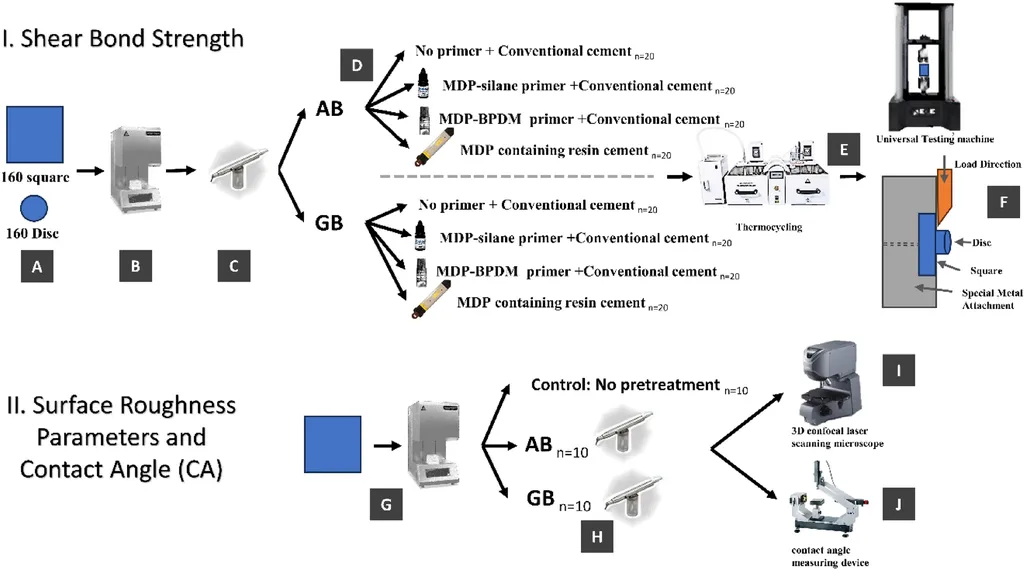In the quest to enhance the bond between ceramics and other materials, a recent study published in *Discover Materials* (which translates to *Discover Materials* in English) has shed light on the potential of experimental cleaning agents to improve the microshear bond strength (µSBS) of zirconia ceramics, even after contamination with saliva. This research, led by Amin Zandian from the Department of Restorative Dentistry at Qom University of Medical Sciences, could have significant implications for industries that rely on ceramic materials, including energy and construction.
Zandian and his team explored the effectiveness of various cleaning agents in restoring the bond strength of zirconia ceramics contaminated with saliva. The study involved creating 128 zirconia blocks, which were then polished, sandblasted, and divided into eight groups. Except for the control group, the specimens were immersed in natural saliva for one minute and then treated with different cleaning solutions. These solutions included experimental agents containing activated carbon, zeolite, and Zr(OH)4 at different pH levels, as well as a commercial solution called Ivoclean and water alone.
The results were striking. Saliva contamination significantly decreased the µSBS, but the application of experimental cleaning agents enhanced the bond strength and decreased the contact angle of water on the ceramic surface. “The highest microshear bond strength was recorded in the group treated with the experimental solution at pH 13, which also showed the lowest contact angle,” Zandian noted. This finding suggests that higher pH levels in cleaning agents might be more effective in removing contaminants and improving the bond strength of zirconia ceramics.
The study also utilized energy dispersive X-ray spectroscopy (EDS) to quantify the elements on the zirconia surface, revealing that cleaning agents, particularly those with high pH, were effective in reducing contaminant elements. “Our results indicate that the cleaning agents, especially those with higher pH, can significantly reduce the presence of contaminant elements on the zirconia surface,” Zandian explained.
The implications of this research extend beyond dental applications. In the energy sector, ceramics are used in various high-performance applications, such as in gas turbines and nuclear reactors, where maintaining strong bonds between materials is crucial for durability and efficiency. The findings from this study could lead to the development of more effective cleaning protocols and agents that enhance the performance and longevity of ceramic components in these industries.
Moreover, the use of activated carbon and zeolites in the experimental cleaning agents opens up new avenues for research into sustainable and environmentally friendly cleaning solutions. These materials are known for their high adsorption capacities and could potentially be used in other industrial applications where contamination is a concern.
As the demand for high-performance materials continues to grow, the need for innovative solutions to maintain their integrity and performance becomes increasingly important. This research by Zandian and his team not only advances our understanding of how to improve the bond strength of zirconia ceramics but also paves the way for future developments in material science and engineering. The study, published in *Discover Materials*, highlights the potential of experimental cleaning agents to revolutionize the way we approach material contamination and bonding, offering promising prospects for various industries.

